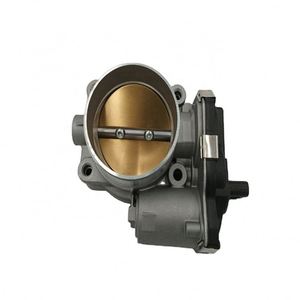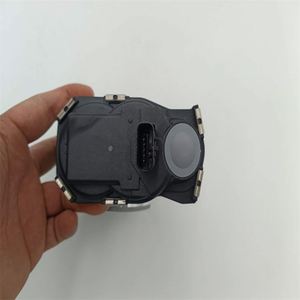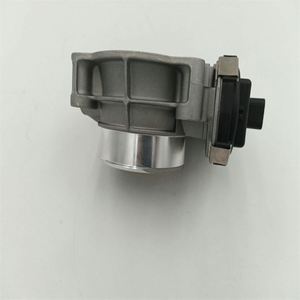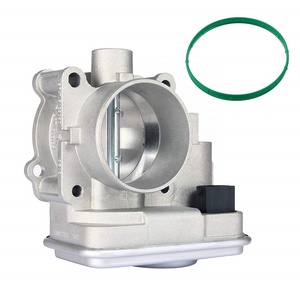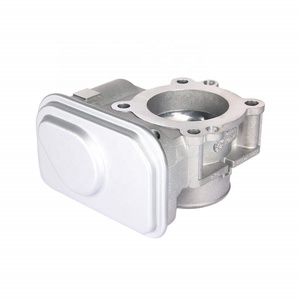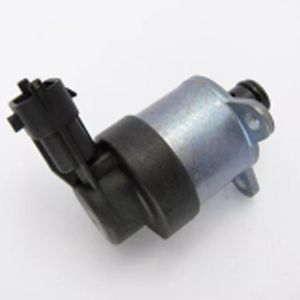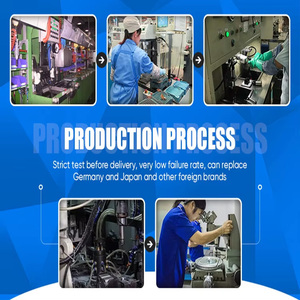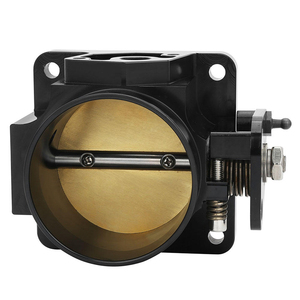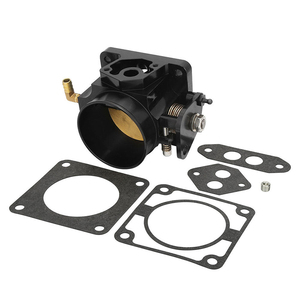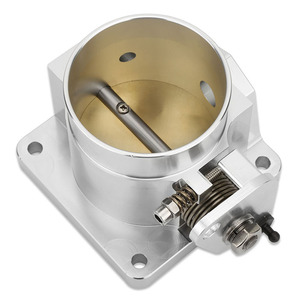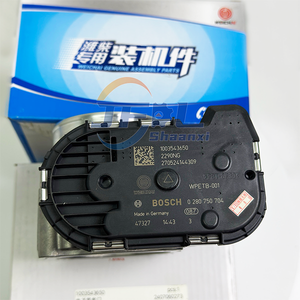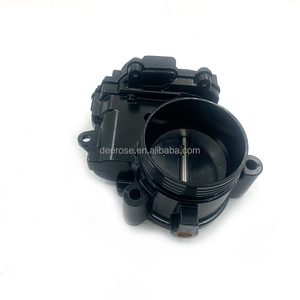Types of Throttle Valves
A throttle valve is a crucial device that controls fluid flow through pipes or ducts. In internal combustion engines, it regulates the amount of air entering the engine, directly affecting power output. Each type of throttle valve offers unique advantages for specific applications:
Expert Tip: Selecting the right throttle valve type for your application can significantly improve system efficiency, longevity, and performance. Consider both immediate needs and long-term operational requirements when making your choice.
Butterfly Valve
Butterfly valves feature a rotating circular disc mounted on a shaft perpendicular to the flow direction. When the shaft rotates, the disc turns to allow or block flow. Their key advantages include:
- Quick opening and closing with minimal pressure drop
- Compact and lightweight design
- Reliable sealing in both directions
Common applications: Water supply systems, wastewater treatment facilities, industrial processes requiring precise flow regulation
Throttle Body Valve
This component is essential in fuel-injected internal combustion engines. It regulates airflow into the engine's intake manifold using a plate similar to a butterfly valve. When the accelerator pedal is pressed, the engine control unit (ECU) signals the throttle body to open the plate:
- Directly controls engine power and acceleration
- Works in conjunction with fuel injection systems
- Modern versions include electronic sensors for precise control
Common applications: Automobiles, motorcycles, marine engines, and other fuel-injected combustion engines
Gate Valve
Although primarily designed for on/off control rather than throttling, gate valves can be used in applications requiring minimal flow regulation. They consist of parallel gate discs and a stem that moves the gates:
- Creates straight flow path with minimal resistance when fully open
- Provides excellent sealing when closed
- Suitable for applications with infrequent operation
Common applications: Water pipelines, oil and gas services, and low-pressure steam systems
| Valve Type | Key Features | Best Applications | Limitations |
|---|---|---|---|
| Butterfly Valve | Quarter-turn operation, compact design | Water systems, general flow control | Limited pressure capacity |
| Throttle Body Valve | Precise airflow control, ECU integration | Automotive engines | Susceptible to carbon buildup |
| Gate Valve | Low flow resistance when open | On/off applications | Poor throttling capability |
| Ball Valve | Quick operation, excellent sealing | High pressure systems | Not ideal for precise throttling |
| Electronic Throttle Control | Computerized operation, sensor integration | Modern vehicles | Higher complexity, cost |
| Variable Area Valve | Precise flow control | Aerospace, chemical processing | More complex design |
Ball Valve
Ball valves employ a spherical disc with a hole through its center. Rotating the valve 90 degrees aligns the hole with the pipe to allow flow or blocks it to stop flow:
- Provides quick and reliable on/off control
- Excellent sealing with low leakage rates
- Durable design with long service life
Common applications: Oil and gas industry, chemical processing, irrigation systems, and high-pressure applications
Electronic Throttle Control (ETC) Valve
Modern vehicles utilize electronic throttle control systems that replace mechanical linkages with sensors, actuators, and computerized control:
- Enables precise airflow management
- Improves emissions control and fuel efficiency
- Integrates with vehicle systems like cruise control and traction control
Common applications: Contemporary vehicles focused on performance, safety, and fuel efficiency
Variable Area Throttle Valve
These specialized valves offer dynamic flow area adjustment for applications requiring extremely precise control:
- Allows fine-tuning of fluid behavior
- Provides consistent control across varying operating conditions
- Higher precision than conventional valve designs
Common applications: Aerospace systems, chemical processing facilities, power generation, and other high-precision environments
Throttle Valve Specifications and Maintenance
Understanding the key specifications of throttle valves is essential for selecting the right valve for your application and ensuring optimal performance. Proper maintenance extends valve life and prevents costly downtime.
Critical Specifications
- Size and Diameter - Must match pipe dimensions
- Material Composition - Affects durability and application suitability
- Pressure/Temperature Ratings - Define operational limits
- Flow Characteristics - Determine control precision
- Actuation Method - Manual, pneumatic, hydraulic, or electric
Essential Maintenance
- Regular Inspection - Check for wear, damage, leaks
- Thorough Cleaning - Remove debris and deposits
- Proper Lubrication - Maintain moving components
- Component Replacement - Address worn parts promptly
- Performance Testing - Verify proper operation
Size Specifications
The size of a throttle valve is critical for proper installation and functionality. Valve size must match the diameter of the connected pipe to maintain system integrity and performance:
- Measured in inches or millimeters (DN sizes in Europe)
- Smaller valves provide greater flow reduction capability
- Oversized valves may cause control issues and inefficiency
- Undersized valves create excessive pressure drop and wear
Selection tip: Always match valve size to pipe diameter while considering flow requirements and pressure limitations
Material Construction
Material selection directly impacts valve durability, corrosion resistance, and application suitability:
| Material | Characteristics | Best Applications |
|---|---|---|
| Cast Iron | Economical, good wear resistance, limited corrosion protection | Water, sewage, non-corrosive environments |
| Stainless Steel | Excellent corrosion resistance, durability, high-temperature capability | Chemical processing, food industry, corrosive environments |
| Brass/Bronze | Good corrosion resistance, ideal for moderate temperatures | Potable water, steam applications, residential plumbing |
| PVC/CPVC | Excellent chemical resistance, lightweight, affordable | Chemical handling, water treatment, lower temperature applications |
| Alloy Steel | High strength, good for extreme temperatures | High-pressure steam, petroleum refining, extreme environments |
Pressure and Temperature Ratings
Every throttle valve has specific pressure and temperature limits that must be observed for safe, reliable operation:
- Pressure ratings typically range from 150 PSI to 600+ PSI (10 to 40+ bar)
- Temperature ratings commonly span from -20°F to 400°F (-29°C to 204°C), depending on materials
- Higher-rated valves generally cost more but offer greater versatility
- Exceeding ratings can lead to catastrophic failure and safety hazards
Safety consideration: Always include a safety margin when selecting valve ratings for your application
Maintenance Reminder: Develop a regular maintenance schedule based on operating conditions. Valves in harsh environments or critical applications require more frequent inspection and service than those in less demanding situations.
Regular Inspection Procedures
Thorough, scheduled inspections help detect potential issues before they cause system failure:
- Visually examine the valve exterior for signs of leakage, corrosion, or physical damage
- Check for unusual noise or vibration during operation
- Verify smooth operation throughout the full range of motion
- Inspect seals and gaskets for deterioration
- Document findings and track changes over time
Recommended frequency: Monthly for critical applications, quarterly for standard use
Cleaning Techniques
Proper cleaning removes debris and deposits that can impair valve function:
- Isolate the valve and relieve system pressure before cleaning
- Use appropriate solvents or cleaners based on valve materials and contaminants
- For throttle body valves, use specified throttle body cleaner to remove carbon deposits
- Clean mating surfaces thoroughly before reassembly
- Ensure all cleaning agents are fully removed before returning to service
Important note: Never use abrasive materials that could damage valve sealing surfaces
Lubrication and Component Replacement
Proper lubrication reduces friction and wear on moving components:
- Use manufacturer-recommended lubricants compatible with the valve materials and media
- Apply the correct amount - over-lubrication can attract contaminants
- Replace worn components promptly, using OEM parts when possible
- Check for proper alignment and function after component replacement
- Document all maintenance activities for future reference
Best practice: Keep a small inventory of common replacement parts for critical valves
How to Choose the Right Throttle Valve
Selecting the appropriate throttle valve requires careful consideration of several critical factors. Making the right choice ensures optimal system performance, efficiency, and longevity.
Important: Incorrect valve selection can lead to poor system performance, premature failure, increased maintenance costs, and potential safety hazards. Always consult manufacturer specifications and consider consulting with a fluid control specialist for critical applications.
Application Requirements
Different applications demand specific throttle valve characteristics:
- Automotive engines require precise airflow control with rapid response
- Industrial processes may prioritize durability and consistent performance
- Water systems need corrosion resistance and reliable operation
- Critical applications might require redundant systems or fail-safe designs
Decision factor: Clearly define your application's specific requirements before selecting a valve type
Engine Type Considerations
Different engine designs have specific airflow requirements that affect throttle valve selection:
| Engine Type | Throttle Valve Requirements | Special Considerations |
|---|---|---|
| Gasoline (Naturally Aspirated) | Precise airflow control, responsive operation | Size matched to engine displacement for optimal performance |
| Diesel | Less critical airflow control (power regulated by fuel) | Often uses simpler design, focus on durability |
| Turbocharged/Supercharged | Must handle pressure variations, higher airflow | Integration with boost control systems, larger diameter |
| High-Performance/Racing | Maximum airflow capability, rapid response | Often uses larger diameter, specialized designs |
| Hybrid/Alternative Fuel | System integration capabilities, specialized materials | Must work with engine management systems |
Size and Diameter Selection
Throttle valve size significantly impacts performance characteristics:
- Larger throttle valves increase maximum airflow and high-end power
- Smaller throttle valves improve throttle response and low-end torque
- Oversized valves may cause poor drivability and throttle response
- Undersized valves can restrict performance and create a bottleneck
Sizing formula: For automotive applications, a common rule of thumb is 1mm of throttle diameter per 4-5 horsepower
Material Construction Considerations
Valve materials must be compatible with the operating environment:
- Aluminum: Lightweight, good corrosion resistance, ideal for automotive applications
- Stainless steel: Excellent durability and heat resistance, suitable for extreme conditions
- Composite materials: Lightweight, cost-effective for specific applications
- Brass/bronze: Good for water applications, natural corrosion resistance
Selection tip: Consider fluid type, temperature range, and chemical exposure when selecting materials
Control Method Selection
Modern throttle valves offer various control mechanisms to suit different needs:
- Mechanical: Simple, reliable, direct physical connection to control
- Electronic: Precise control via sensors and actuators, integrates with computer systems
- Hybrid systems: Combine mechanical reliability with electronic precision
- Programmable: Advanced electronic systems with customizable response curves
Modern trend: Electronic throttle control (ETC) systems are becoming standard in newer applications due to their precision and integration capabilities
Step 1
Define Application Requirements
Step 2
Determine Size & Flow Needs
Step 3
Select Material & Construction
Step 4
Choose Control Method
Step 5
Verify Compatibility
DIY Throttle Valve Replacement Guide
Replacing a throttle valve can be accomplished as a DIY project with the right tools and careful attention to detail. Follow this step-by-step guide for a successful installation.
Safety Warning: Always work on a cool engine and disconnect the battery before beginning work on the throttle valve. Improper installation can cause engine performance issues or damage. If you're uncertain about any step, consult a professional mechanic.
1. Identify the Issue
Before replacing the throttle valve, confirm it's the source of the problem:
- Consult the vehicle's manual to locate the throttle valve
- Understand how the specific valve operates in your system
- Check for diagnostic trouble codes (DTCs) if applicable
- Verify symptoms match those of a faulty throttle valve
Diagnostic tip: Common symptoms include rough idle, stalling, poor acceleration, and illuminated check engine light
2. Gather Tools and Materials
Having all necessary tools and parts ready before starting saves time and frustration:
- Tools: Screwdrivers (flathead and Phillips), socket set with ratchet, torque wrench, pliers
- Replacement parts: New throttle valve assembly or components
- Cleaning supplies: Throttle body cleaner, clean shop rags, cleaning brush
- Safety gear: Gloves, safety glasses
- Optional: Service manual for your specific vehicle/system
Important note: Always use OEM or high-quality replacement parts for reliable performance
3. Prepare the System
Proper preparation ensures safety and prevents damage:
- Ensure the engine is completely cool before beginning work
- Disconnect the negative battery terminal to prevent electrical issues
- For automotive applications, locate the throttle body/throttle valve assembly
- For industrial systems, isolate the valve by closing appropriate shutoff valves
- Release system pressure if applicable
Safety reminder: Wait at least 15 minutes after disconnecting the battery before working on electronic throttle systems
Documentation Tip: Take clear photos of the throttle valve assembly before disassembly. This visual reference can be invaluable during reassembly, especially for noting the correct positioning of electrical connectors and vacuum lines.
4. Remove the Throttle Valve Assembly
Careful removal prevents damage to surrounding components:
- Disconnect all electrical connectors from the throttle body/valve
- Remove any air intake hoses or ducts connected to the assembly
- Note the position of all vacuum hoses and connections (if applicable)
- Unbolt the throttle valve assembly using the appropriate sockets or tools
- Carefully lift the assembly away from its mounting location
Organization tip: Place bolts in a labeled container to keep track of their original positions
5. Inspect and Clean Components
A thorough inspection helps identify additional issues:
- Examine the removed throttle valve for carbon deposits, damage, or wear
- Inspect gaskets and seals for deterioration
- Check electrical connectors for corrosion or damage
- Clean the throttle body mounting surface on the intake manifold
- If reusing any components, clean them thoroughly with appropriate cleaner
Cleaning note: For automotive throttle bodies, use only throttle body cleaner, not carburetor cleaner, which may damage sensors or coatings
6. Install the New Throttle Valve
Careful installation ensures proper function:
- Install new gaskets if applicable
- Position the new throttle valve assembly in the correct orientation
- Hand-tighten mounting bolts before final tightening
- Tighten bolts to the manufacturer's specifications using a torque wrench
- Reconnect all electrical connectors, ensuring they click securely into place
- Reattach air intake components and vacuum lines
Torque tip: Tighten bolts in a cross pattern (like tightening lug nuts) for even pressure
7. Test and Calibrate
Proper testing ensures the new valve functions correctly:
- Reconnect the battery
- For electronic throttle systems, many vehicles require a relearn procedure:
- Turn the ignition on (but don't start) for 2-3 minutes to allow initial calibration
- Start the engine and let it idle until it reaches normal operating temperature
- Some vehicles may require a specific relearn procedure (consult service manual)
- Check for proper idle operation and throttle response
- Clear any diagnostic trouble codes if necessary
- Test drive the vehicle to ensure proper operation throughout the rpm range
Adaptation note: Modern vehicles may require several driving cycles to fully adapt to a new throttle valve
Frequently Asked Questions
Several symptoms can indicate a faulty throttle valve:
- Irregular idle speed - Either too high (hanging idle) or too low, possibly accompanied by stalling
- Hesitation or poor acceleration - Delayed response when pressing the accelerator
- Check engine light illumination - Often with codes related to throttle position or idle control
- Stalling or rough running - Especially when the engine is cold or at idle
- Poor fuel economy - A faulty throttle valve may cause inefficient fuel usage
- Limp mode activation - Vehicle may enter reduced power mode as a safety measure
If you experience these symptoms, a diagnostic scan is recommended to confirm the issue before replacement.
Whether a throttle valve can be repaired depends on the nature and extent of the damage:
- Carbon buildup: Often can be resolved with thorough cleaning using appropriate throttle body cleaner
- Electrical issues: Sometimes repairable if limited to connectors or wiring, rather than internal components
- Mechanical damage: Rarely repairable if the valve plate, housing, or internal components are damaged
- Electronic failures: Typically not repairable when sensors or actuators within the throttle body fail
For modern electronic throttle bodies, replacement is generally more cost-effective and reliable than attempted repairs. Simpler mechanical throttle valves may be more amenable to repair or rebuilding.
The typical lifespan of a throttle valve varies based on several factors:
- Average lifespan: 80,000 to 200,000 miles for modern throttle bodies
- Driving conditions: Stop-and-go traffic creates more wear than highway driving
- Maintenance: Regular cleaning extends throttle valve life significantly
- Environmental factors: Exposure to extreme temperatures, dust, or contaminants accelerates wear
- Manufacturing quality: OEM parts typically last longer than budget aftermarket options
With proper maintenance, including periodic cleaning and inspection, many throttle valves can last the lifetime of the vehicle. Industrial throttle valves in controlled environments often have even longer service lives with proper maintenance.
Yes, regular throttle valve cleaning is beneficial for several reasons:
- Prevents carbon buildup that can restrict airflow
- Maintains proper idle speed and throttle response
- Helps ensure accurate air/fuel mixture for optimal combustion
- Extends the lifespan of the throttle valve components
- Improves fuel economy and reduces emissions
For automotive applications, cleaning is typically recommended every 30,000 to 60,000 miles. However, vehicles operating in dusty environments or using lower-quality fuels may benefit from more frequent cleaning.
Always use proper throttle body cleaner and follow manufacturer guidelines, as some components have special coatings that can be damaged by harsh cleaners or mechanical scrubbing.
Yes, electronic throttle valves (ETC systems) require special considerations:
- Battery disconnection: Always disconnect the battery before working on electronic throttle systems
- Cleaning caution: Use only cleaners specifically approved for electronic throttle bodies
- No manual manipulation: Avoid forcing the throttle plate open manually, which can damage the motor or gears
- Relearn procedures: Many vehicles require a specific relearn or calibration procedure after replacement
- Diagnostic equipment: Professional scan tools may be needed for proper calibration
Electronic throttle systems are more complex than traditional mechanical throttles but offer superior control and integration with modern engine management systems. When in doubt, consult the vehicle service manual or a professional technician.








